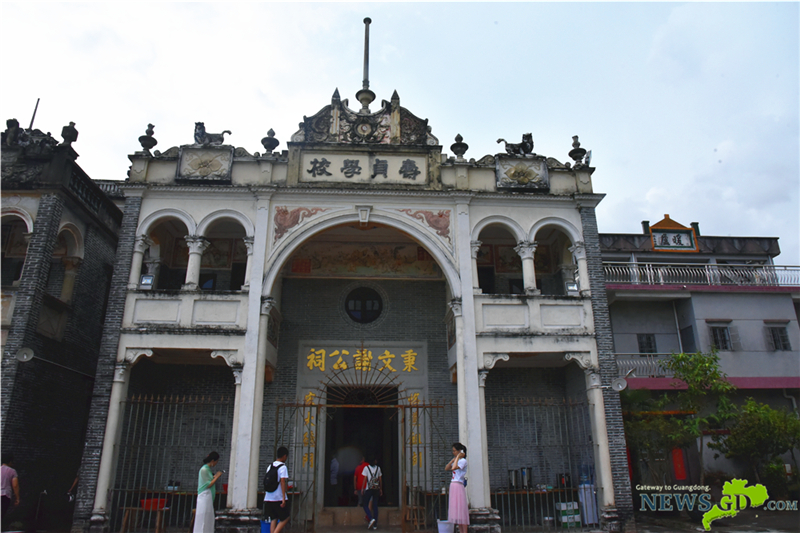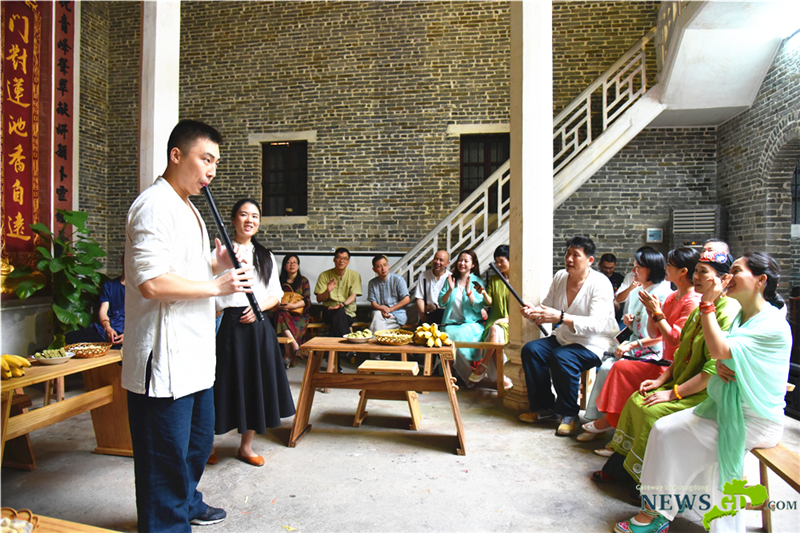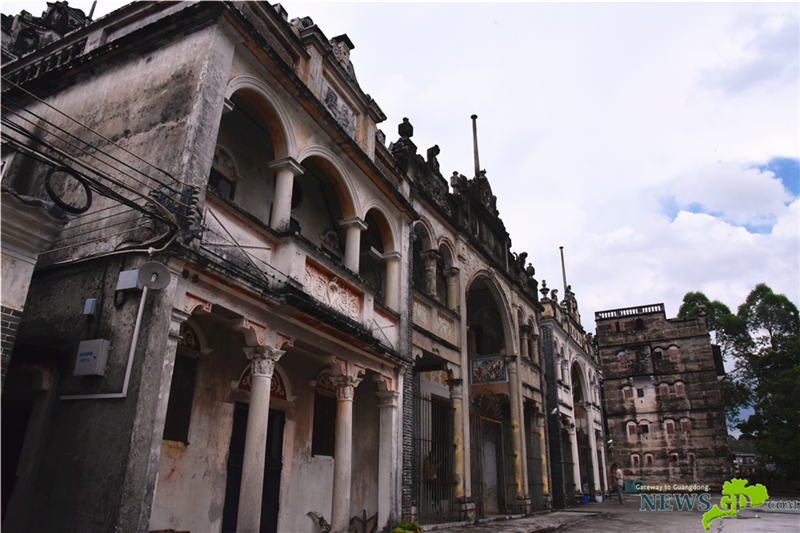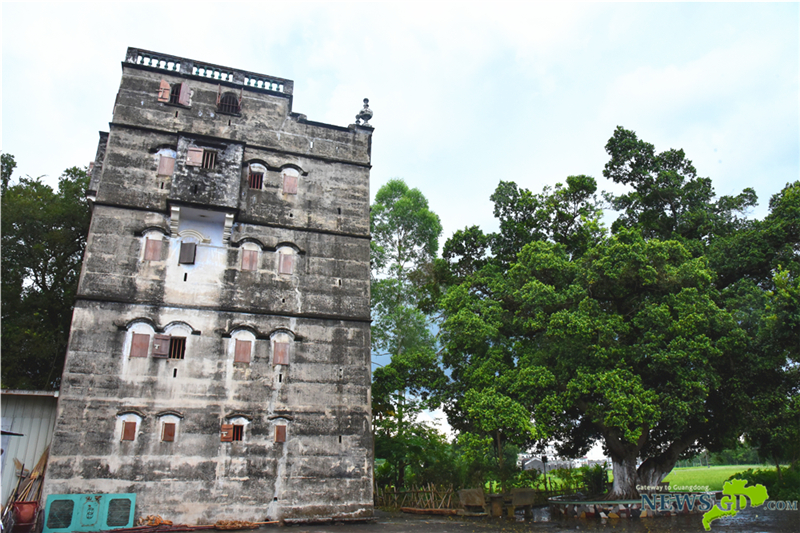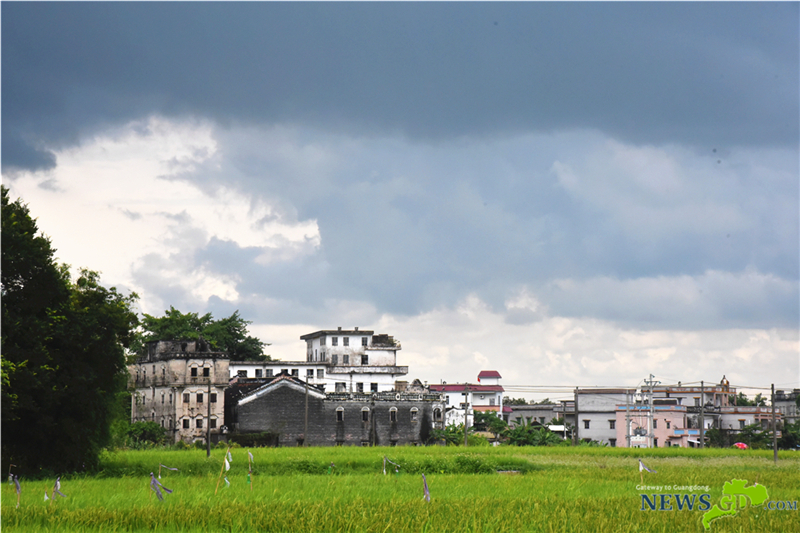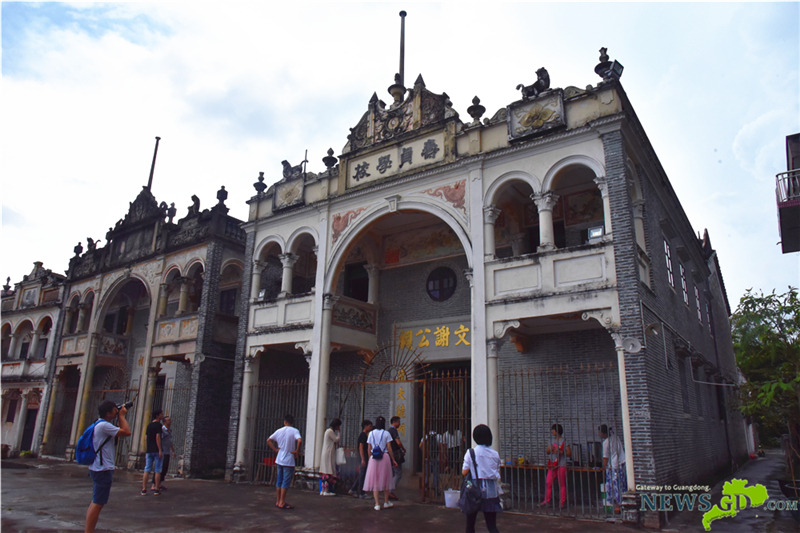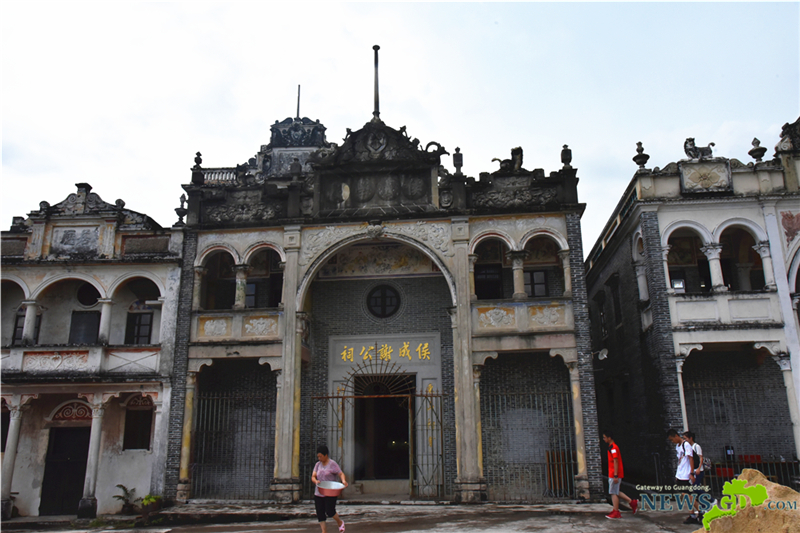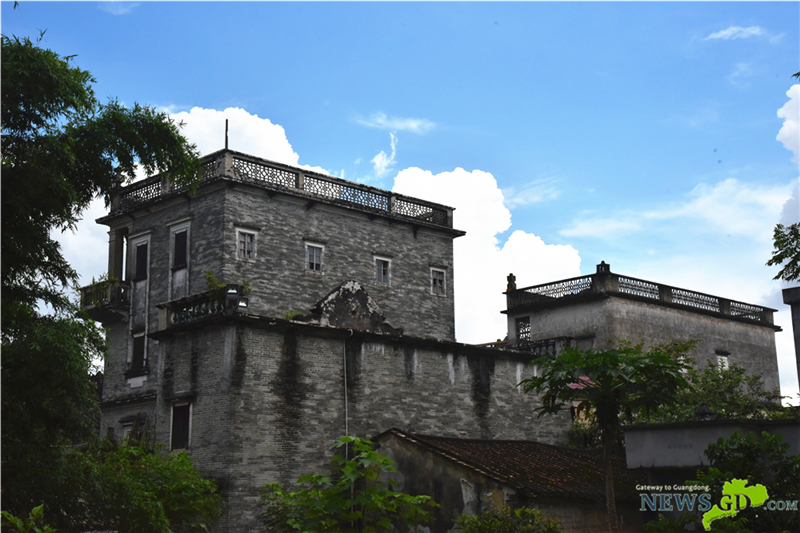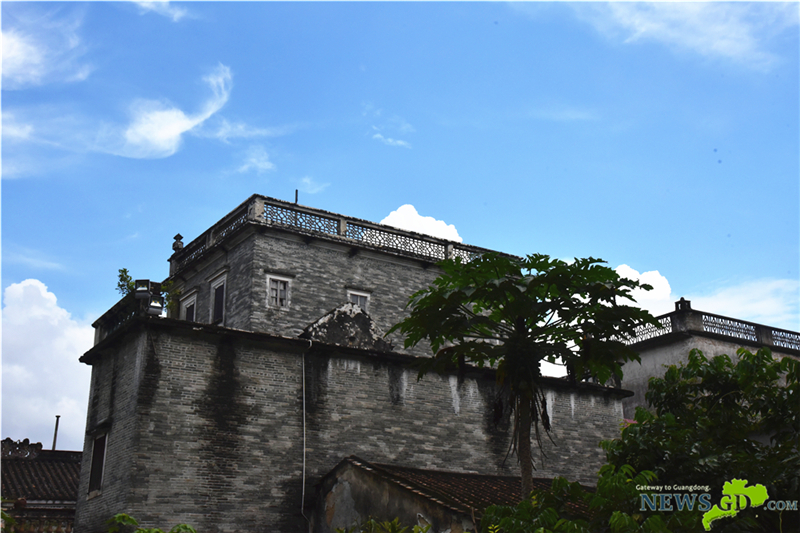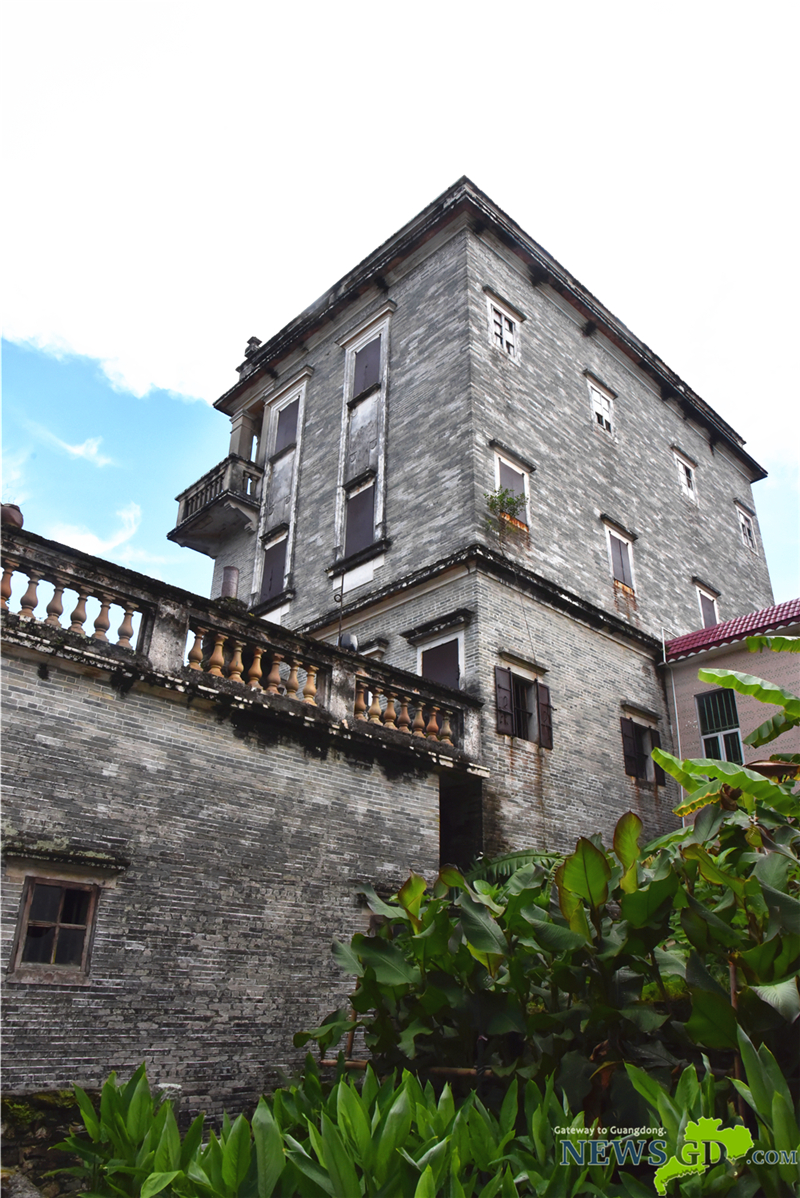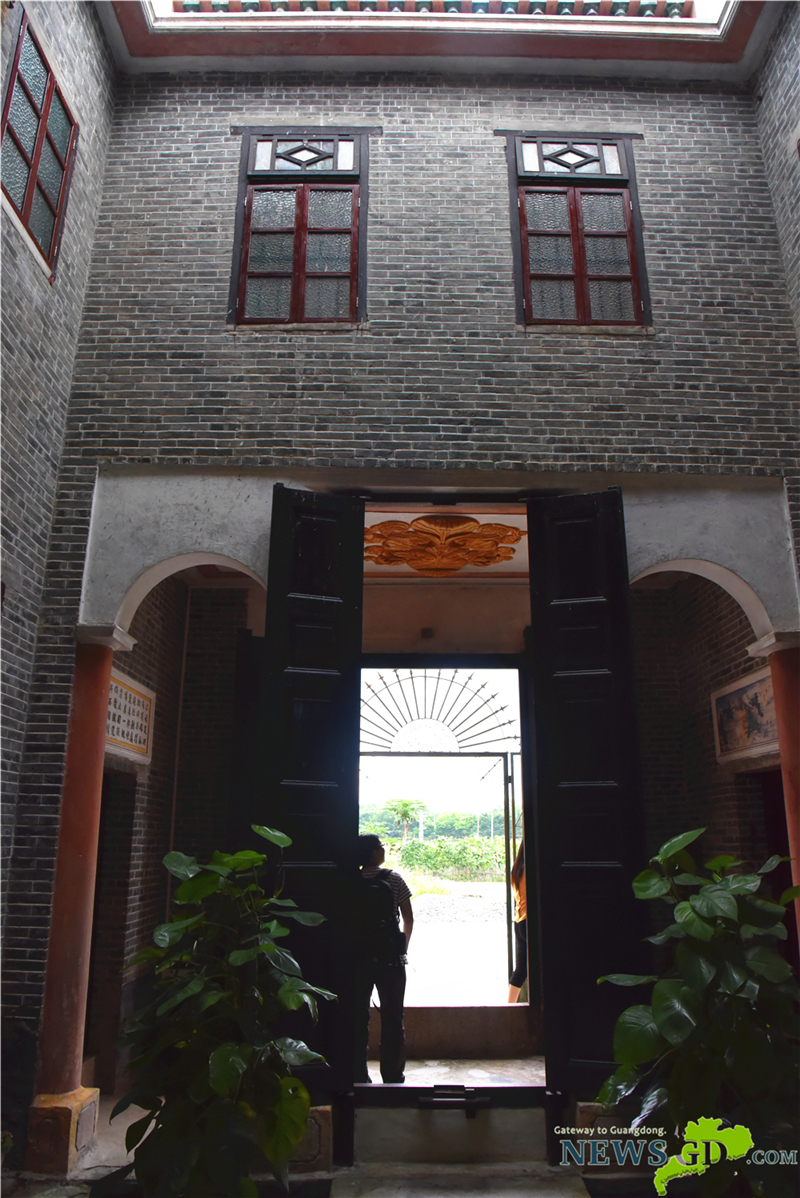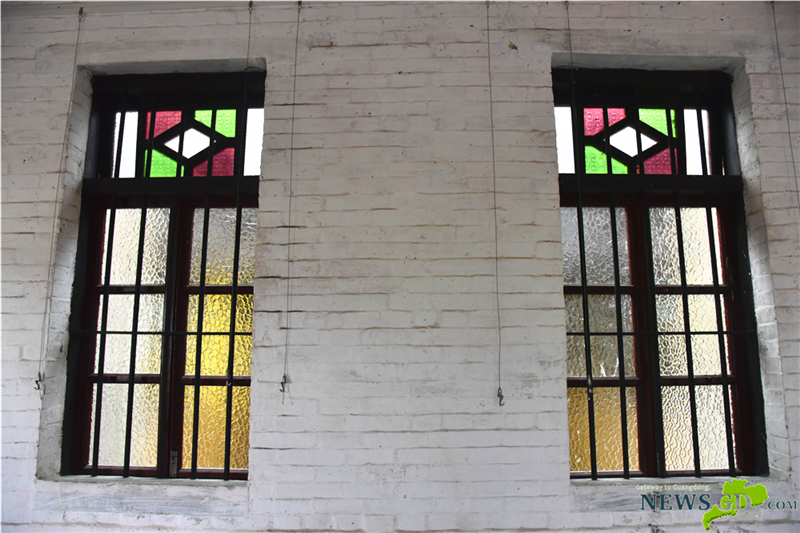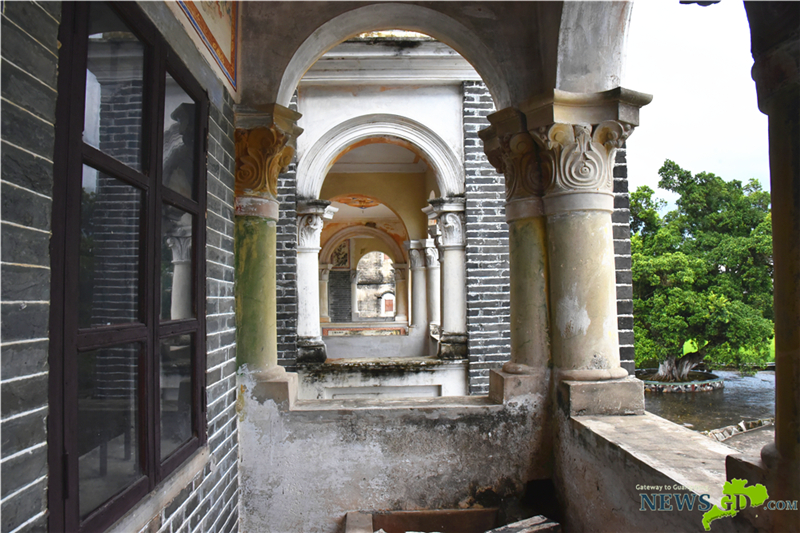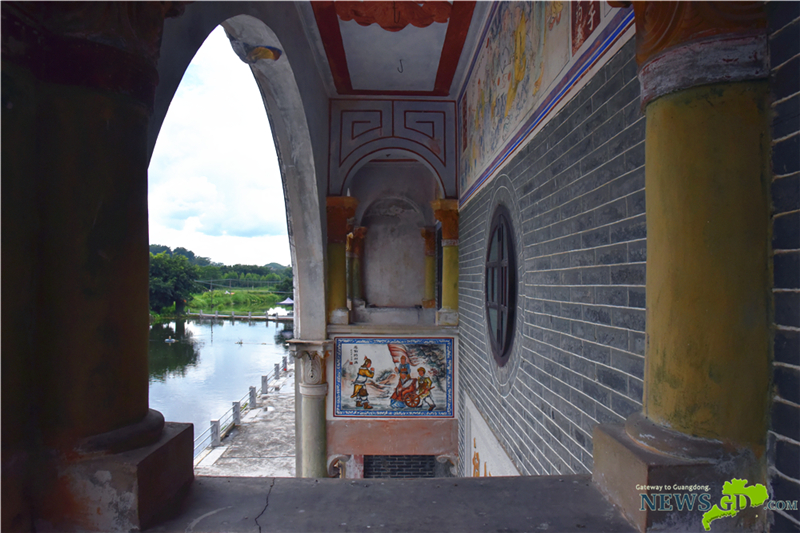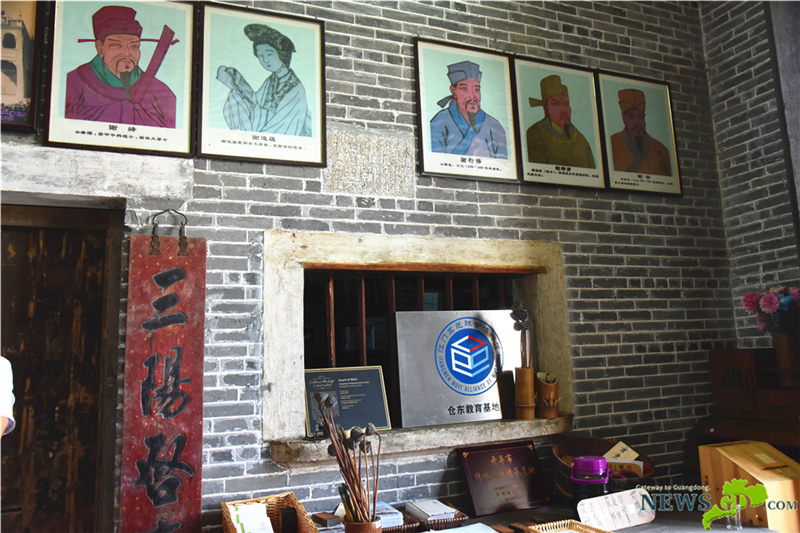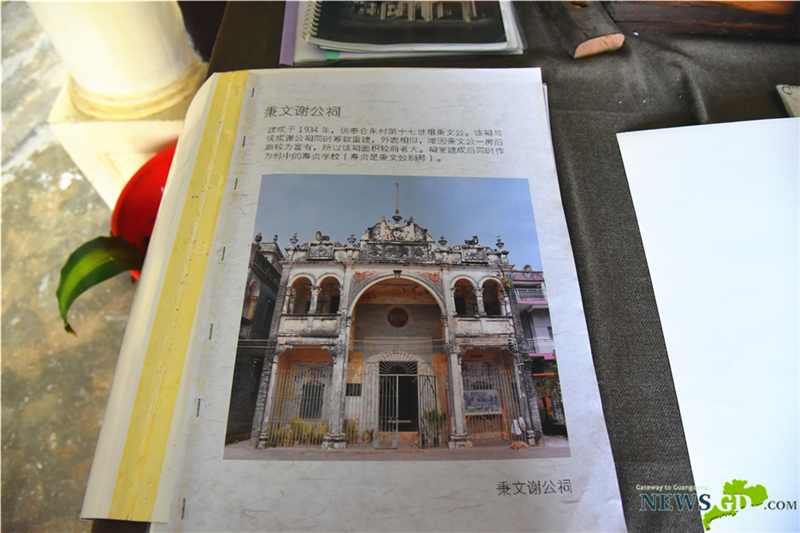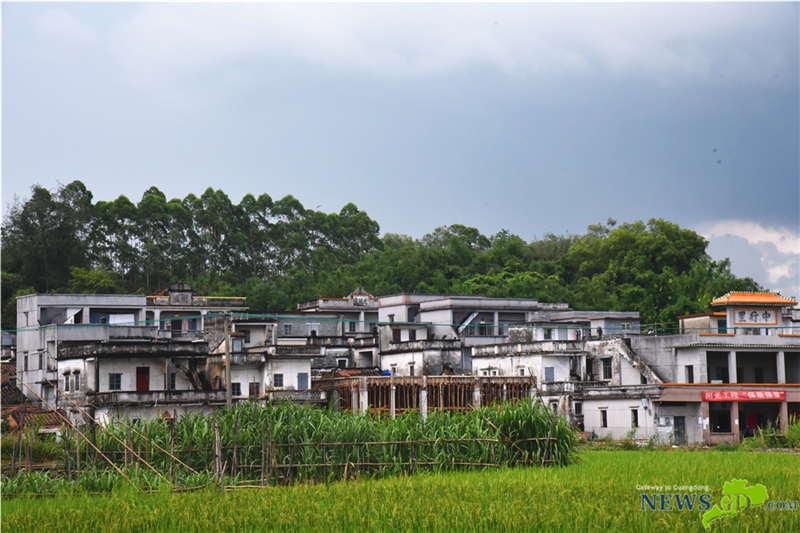Bing Wen Xie Ancestral Hall in Cangdong Village. [Photo: Newsgd.com/Monica]
In September 2015, Cangdong Heritage Education Center in Guangdong Province received the Awards of Merit—Award of Excellence in the year’s UNESCO Asia-Pacific Awards for Cultural Heritage Conservation. Where is this Cangdong Heritage Education Center? Why would it win this award?
On the afternoon of June 10 which was also China’s first Cultural and Natural Heritage Day, Newsgd reporter came to Cangdong Village, where Cangdong Heritage Education Center is based. It is near the Kaiping Diaolou and Villages, which is a World Heritage site in Jiangmen City of Guangdong Province.
In front of a large pond in Cangdong Village, there are a dozen of ancient buildings which are of unique style. At the Bing Wen Xie Ancestral Hall, one of the ancient buildings, a group of guqin lovers from all around the country were playing the guqin and sharing experience with joy.
Related news: Visiting a UNESCO World Heritage Site in Guangdong: Kaiping Diaolou
GD government and people make joint efforts to protect heritage
Guqin lovers gather at the Bing Wen Xie Ancestral Hall in Cangdong Village on June 10, 2017. [Photo: Newsgd.com/Monica]
According to Tan Jinhua, an organizer of the guqin event and an initiator of Cangdong Heritage Education Center, the village used to be worn-out before 2010.
In the summer of 2010, Tan Jinhua, who was also a teacher of the Architecture Department of Wuyi University, led a group of students to carry out researches in Cangdong Village on its history, culture, folk customs and architecture. And then Cangdong Heritage Education Center was established in the village.
Ancient builds in Cangdong Village. [Photo: Newsgd.com/Monica]
Speaking of Tan Jinhua, village head Mr. Xie, in his 50s, said he and the villagers were very surprised about Tan’s arrival at the first time. But in the past five years, they witnessed that Tan worked out the Cangdong Project and done all the work along with volunteers, students and villagers, without any complaint.
Located in Kaiping’s Tangkou Town, Cangdong Village is a typical Lingnan style village with a history of over 700 years, containing noteworthy architectural typologies dating to the Ming Dynasty. It is the fiver-year Cangdong Project that rejuvenates the village and reverses the gradual abandonment of this once-prosperous farming community.
Photos on a handbook show Bing Wen Xie Ancestral Hall before and after reparation. [Photo: Newsgd.com/Monica]
Starting from 2011, Tan Jinhua united the strength of colleges and universities, enterprises and government, and restored two ancestral halls, one diaolou, two ancient residential buildings, and rebuilt one ancient temple. They not only repaired the cultural relics, but also enhanced the community unity and cultural identity, enabling the traditional lifestyle and culture to be inherited.
By designing an outreach program targeting youth, the Cangdong Project has helped to raise awareness and concern about local heritage among the younger generation. The commendable efforts of community members, patrons and conservationists have realized an ambitious new vision for the revitalization of the village.
A watchtower in Cangdong Village. [Photo: Newsgd.com/Monica]
That’s why Cangdong Heritage Education Center was awarded with the Awards of Merit—Award of Excellence in the year’s UNESCO Asia-Pacific Awards for Cultural Heritage Conservation in September 2015. Tan Jinhua said, the award was a recognition for the cultural heritage conservation work that has been done in the past five years, but Cangdong Village still needs continuous conservation now and in the future.
A combined photo shows people attend activities in Cangdong Village.
Now, if you visit this village, you will see a vibrant community, ancient buildings having a completely new outlook, people gathering at the ancestral halls or the square near the old banyan tree, singing, dancing, performing lion dance, celebrating festivals.
Rural landscape and ancient buildings in Cangdong Village. [Photo: Newsgd.com/Monica]
Cangdong Heritage Education Center (仓东教育基地)
Add.: Cangdong Village, Beiyi District, Tangkou Town, Kaiping City, Guangdong (广东省开平市塘口镇北义乡仓东村)
Self-driving: Enter the destination “江门开平市塘口镇苍前东” on your GPS, or get to Tangkou Liyuan Garden (塘口立园), and you will find Cangdong Village near it.
People visit Cangdong Village. [Photo: Newsgd.com/Monica]
Further Reading: About the UNESCO Asia-Pacific Awards for Cultural Heritage Conservation (联合国教科文组织亚太区文化遗产保护奖)
Along with Cangdong Heritage Education Center, four other sites in China received the same award in September 2015, including Honorable Mentions for YHA Mei Ho House Youth Hostel in Hong Kong (香港盐田仔盐场) and San Fang Qi Xiang in Fujian Province (福建省福州市三坊七巷), Awards of Merit for Pingyao Traditional Courtyard House in Shangxi Province (山西省平遥古城民居), and Award of Distinction for Saltpans of Yim Tin Tsai in Hong Kong (香港美荷楼青年旅社).
A total of 12 winning projects from India, China, Lao PDR, Australia and Thailand have been recognized in 2015's Heritage Awards.
The Asia-Pacific Awards for Cultural Heritage Conservation recognizes the efforts of private individuals and organizations that have successfully restored and conserved structures and buildings of heritage value in the region. Through recognizing private efforts to restore and adapt historic properties, the awards aim to encourage other property owners to undertake conservation projects within their communities, either independently or by seeking public-private partnerships.
A panel of international conservation experts met in June to review 36 entries from across the Asia-Pacific region. Winners were selected based on how the projects reflected a clear understanding and application of various criteria, such as the articulation of the spirit of place, technical achievement, appropriate use or adaptation, and the project's contribution to the surrounding environment as well as the local community's cultural and historical continuity.
Eligible projects must be more than 50 years old and the restoration must have been completed within the past 10 years. Buildings with a new use must have also been in viable use for at least one year from the date of the awards announcement.
People walk by the Hou Cheng Xie Ancestral Hall in Cangdong Village. [Photo: Newsgd.com/Monica]
Ancient buildings in Cangdong Village. [Photo: Newsgd.com/Monica]
Ancient buildings in Cangdong Village. [Photo: Newsgd.com/Monica]
An ancient building in Cangdong Village. [Photo: Newsgd.com/Monica]
People visit an ancient ancestral hall in Cangdong Village. [Photo: Newsgd.com/Monica]
People visit an ancient ancestral hall in Cangdong Village. [Photo: Newsgd.com/Monica]
The inside of an ancient ancestral hall in Cangdong Village. [Photo: Newsgd.com/Monica]
The decoration of an ancient building in Cangdong Village. [Photo: Newsgd.com/Monica]
The decoration of an ancient building in Cangdong Village. [Photo: Newsgd.com/Monica]
The inside of an ancient building in Cangdong Village. [Photo: Newsgd.com/Monica]
A handbook of Cangdong Village. [Photo: Newsgd.com/Monica]
Cangdong Village. [Photo: Newsgd.com/Monica]

Cangdong Village. [Photo: Newsgd.com/Monica]


















